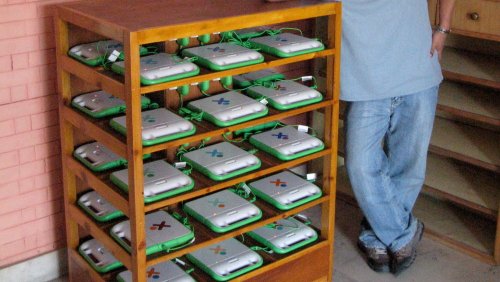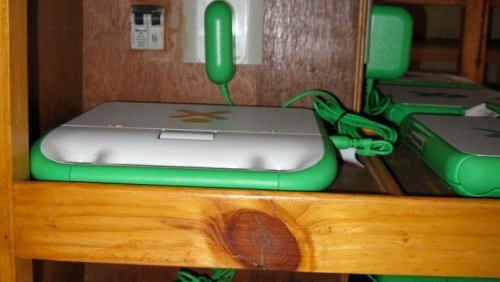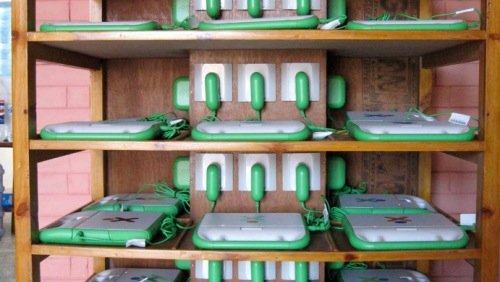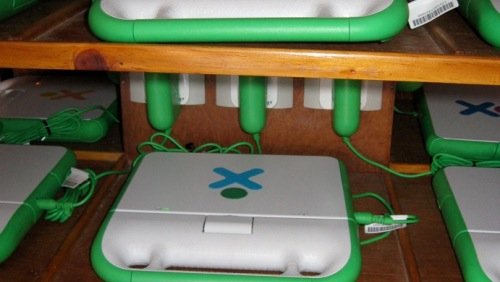
Charging Laptops, not Electrocuting Kids: The XO Charging Rack
April 18, 2008 Program Updates OLE Nepal
Here below we see Ram; not only software developer extraordinaire, but also electrical engineer extraordinaire, who in his spare time is known to make and install small micro-hydro installations for rural villages in Nepal. For our pilot schools we needed XO loading stations that were low-cost, practical and cheap. So we set Ram to work.
We didn't want to run power cables to each child's desk. 1) There would be substantial power loss using regular AC power strips 2) kids would trip on them, esp. the second graders. 3) Most power strips in Nepal are of quite poor design and frequently cause sparks when you insert a power plug. 4) We feel that tethering kids to power strips would limit much of the ad-hoc collaboration that the XO inspires.

Ram Krishna Singh standing proud with his creation, the XO charging rack. It accommodates 25 XO's. We will put a step in front of it so the second graders can reach the top shelf. The power rack will go in the back of the class. Kids will place the XO's inside the rack in the morning and take them out as needed.

In the top part of this picture you can see the cutoff switch. We want to minimize the number of times the child has to plug in and unplug the XO power connector, thus minimizing the possibility of electrocution.
We need a more elegant way to tie down the cables so they won't get tangled.
The XO goes in front first so the child doesn't have to reach in too far to grasp the DC portion of the plug.


A large number of students at the pilot school don't have electricity at home, but some do. Ideally we would like to have two chargers for each XO, one that stays at the school and one at home. This would be one less thing for the kids to carry around, we are especially concerned about the second graders. We don't want them frequently plugging in and unplugging XO's from various power outlets. Most power outlets in Nepal are of quite poor design and often emit sparks. We will have to build our power adapters and/or harass OLPC to send us a lot more power adapters.